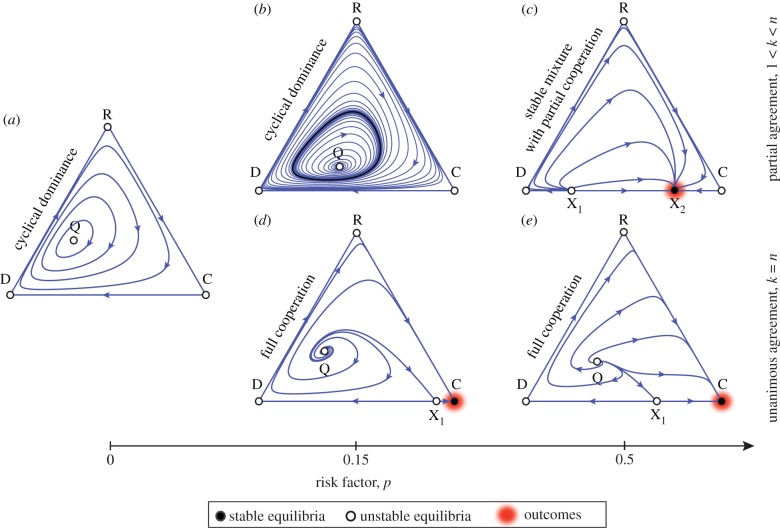Figure 2.
Threshold public good games with reward funds. The simplex represents the state space. The three nodes, D: 100% defectors, C: 100% cooperators and R: 100% rewarders, are trivial equilibria. (a) Risk zero (p = 0). The unique interior equilibrium Q is surrounded by closed orbits, along which the three strategies dynamically coexist. Boundary orbits form a cycle connecting the three nodes. (b,c) Partial agreement (1 < k < n). For a small risk p, there can exist a stable closed orbit (bold, black line) (b). When p goes beyond a critical value p*, a mix among the three strategies is no longer sustainable, and only cooperators can stably coexist with defectors at point X2. All interior population states evolve to this state (c). (d,e) Unanimous agreement (k = n). When p increases beyond p*, all individuals end up with the all-cooperation equilibrium C. Parameters: n = 5, c = c′ = 0.1, r′ = 2.5, and for (b,c), k = 3. (Online version in colour.)

